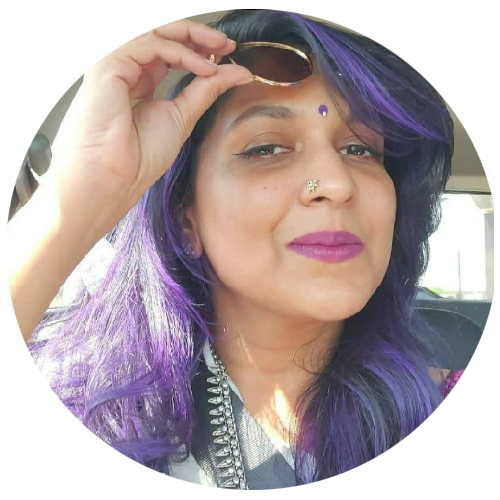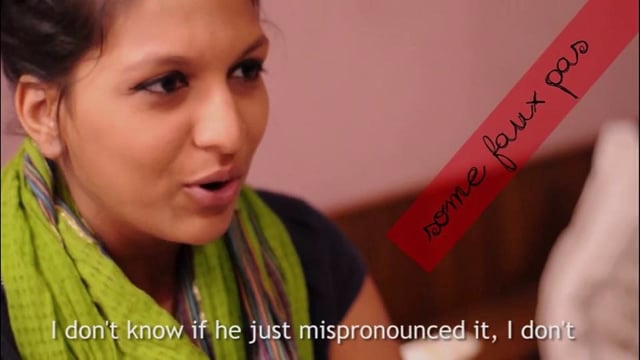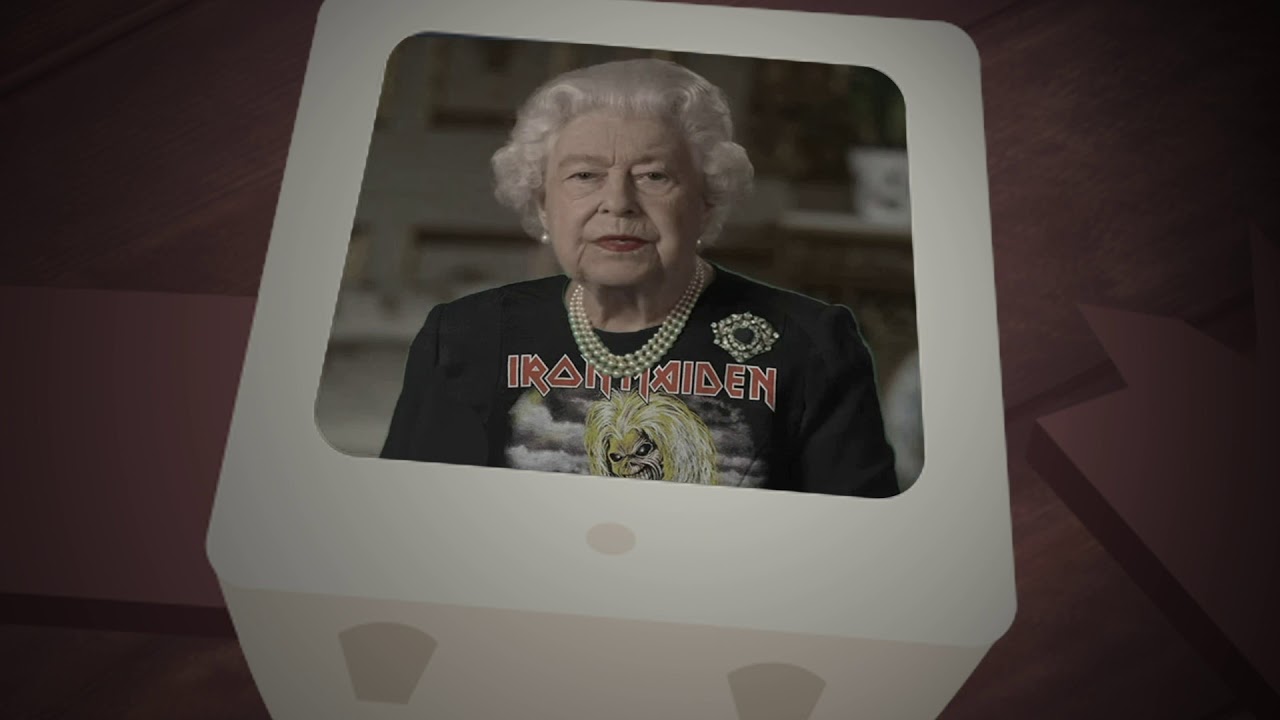TUMBLING INTO THE NISHAVERSE: A conversation with Nisha Vasudevan

From teasing our palette with her masterchef promo to trailing the hip-hop scene in India to taking us on the “eureka moment” journey with some of the most innovative makers of India, Nisha’s work walks the fine balance between meaningful and playful. Look up her bio, and you’ll find the hottest brands, fresh visuals and cool ass awards! Promos, ads, vignettes, series, music videos, podcasts, illustrations, and heck, even poetry, there is little she hasn’t dabbled in.
Not just that, if you’ve been plugged into the gram, you may even have stumbled upon her recent experiments with AI. Short home-video like snippets breaking down her creative and technical process.
In this conversation we dip into the multiverse that is Nisha’s creative world.
AG: How would you describe your journey as a filmmaker and a creative director thus far?
At the age of 22, I hopped out of university starry-eyed and armed with an MA in Digital Documentary from the University of Sussex. I went straight into a job producing video content and show pitches for NH7.in - then, it was an alternative culture web portal in Mumbai, and today it is one of the best known music-festivals in India. However, my journey started long before this at 17, when I spent a summer as a copy-writing intern at OgilvyOne Worldwide while simultaneously studying Mass Media at college.
Through college, I also worked various part-time jobs in the industry, including being a content-writer who spotted trends for FTV India’s website and working at Critical Arts And Media Practices where I contributed to filming and building a public domain footage archive. Soon after university, I had my nose to the grindstone teaching myself how to animate using books, the internet and my bare hands! Today, I am a creative professional who directs films, writes, animates, illustrates and builds creative strategy.
AG: In your words, you're a self taught animator. What sparked this interest and how did you navigate this process of learning animation by yourself ?
I was sure it was going to change the world (as one does) - but once it was complete, I was deeply underwhelmed by what I had created. I decided that the only way I could express my personal voice was to create little animations to go with the visuals - and so, I taught myself to animate. I used Youtube to look through tutorials and learned basic After Effects, and I was able to add a layer of rudimentary cutesy animations to the film. I enjoyed it so much that I started doing it more and more, just for fun. As time passed, I was invested in learning so I used a range of resources on the internet to experiment and teach myself more.
Richard Williams Animators’ Survival Guide is a book I still go through every once in a while to sharpen up my theory. It taught me so much in the absence of a human teacher. I’ve always been a fan of animation and cartoons so my knowledge of the tropes was quite vast even back then - this helped me figure out what I wanted to recreate but not how to do it. For instance, I knew that Roadrunner would run a certain way, but this book helped me figure out that the terminology is “Walk Cycle”. Or I knew that there’s a squishiness to a bouncing ball - but the book helped me figure out that it’s called “squash and stretch”.
So books and the internet helped me put a name to what I intuitively knew from my Saturday morning binges as a child.
It’s wonderful to live in a world where if you want to learn something, it’s only a few Google searches away from you.
AG: Looking back, what would you have wanted to do differently (if at all) for this particular learning curve.
The tricky part about teaching yourself is that you don’t always have mentorship. That’s a big miss, and I made a lot of mistakes and technical errors. Things weren’t correctly animated sometimes, and I had no way of knowing until peers in the community pointed it out to me and taught me more.
So, being open to feedback, understanding and accepting what you don’t know is an important skill. And always, always find yourself a community of peers to learn from and bounce ideas off. I hope this helps other autodidacts figure out ways to learn.
AG: You have worked across mediums - live action, animation, motion graphics. what defines your choice of media when it comes to a creative endeavour? Is there any medium you prefer more than the others, if so why.
I don’t particularly prefer any medium, because all stories can and should be told differently. Being able to work across mediums allows me to choose the medium of storytelling that I deem the best fit (and honestly it also keeps me on my toes, trying to find new ways to create things)
AG: In each project we see this latent playfulness and quirk. Was it always so ? How did you come to arrive at your tone of voice ? According to you, how important is it to have a "style" within one's work?
I can’t comment on the importance of style in one’s commercial work - because there, you are providing a service, and a very distinctive style can sometimes take away from the brand voice you are trying to build. But in my personal work, I cherish playfulness. I don’t think I ever “arrived” at this tone of voice, but instead it was something I always have bubbling away in my head. I just kept (and keep) trying to find ways to express it instead of suppressing it. I think I’ll actually just absolutely implode if I don’t do something with it. Most of the time, it’s really just a genuine emotional release. I am quite excited and happy that you recognise it as a distinct tone of voice 🙂
AG: What are your thoughts around the need to play and experiment within one’s work ? How much emphasis do you place on them personally?
SO MUCH! It’s so very important to me, personally, to keep experimenting. I am a curious person who gets bored very easily - and both these traits come together to make sure I keep tinkering with new things.
On the whole though,
I do believe there is a massive need for play within the realm of creative work. I sometimes think we take things much too seriously in the media industry. What are we, NASA?
(vehement nodding in agreement by Team AGI)
We just gotta get a film out there - and we’re lucky that’s the most important thing we have to do. No one lives or dies off the back of a video release. So we are lucky we get to create and entertain and play - we must make the most of it, because not everyone does something so wholly unimportant in the larger scheme of things.
We must play because we can.
AG: How do you tread that balance between keeping your individual voice within commercial work?
Keeping some amount of an individual voice alive in commercial work is a way of distinguishing yourself and building a niche. I must admit, though, I have always found it challenging to tread this line. I have learned over the years the difference between providing a creative service and creating for fun. I keep a fine boundary between the two.
I have made the mistake of indulging a creative kink and landed up alienating audiences - so in commercial work, I have learned to do what the deliverable asks for and be respectful of the client’s needs. One mustn’t let their voice or impulses overshadow the brand’s need. I do, however, consciously create the space for me to do what comes most naturally to me elsewhere - in podcasts, on Instagram, short films, music videos etc.
Having creative outlets outside of commercial work is one way to ensure that you don’t lose a sense of play or what you enjoy creating. This way one won’t try to shove all their creative ideas, hopes and dreams into that one commercial project, and be able to strike a balance between brand need and personal voice.
AG: What has been your most memorable project ? What made it tick ?
There are several, but in the context of animation it is The Peeping Monster. It’s horribly animated, but full of heart.
It’s the short film I made trying to teach myself to animate, and so I’ll always hold a candle in my heart for. I learned the puppet tool and overused it, I learned to use my Wacom for scribbly textures and overused it - but I was so excited and determined, and I’m not sure when I’ll ever have that feeling of being a heart-eye-emoji again. So it’s definitely this. I hope you enjoy it, warts and all.
As someone always drawn to alternative culture, I grew up throwing myself into grunge, metal and punk-rock. As a result, I’ve always maintained something of a DIY ethic at the core of my work.
AG: A lot of your recent work has been exploring/ tinkering with AI - how did you get into this rabbit hole? Given the amount of heated debate around integration of Ai in creative workflows, what is your view as a creative practitioner ? How do you see this integrating into your work?
I got into this rabbit hole as most other people did - out of curiosity. My stance on it is simple - I see AI as a tool and not a medium.
It helps create things in the same way Photoshop has helped create things in the past. I have always used AI in tandem with other tools - shooting things and running through AI, animating with AI + After Effects etc. For instance, this piece required me to edit footage on Premiere to get the lipsync right before running it on AI. And this piece uses Adobe Character Animator for the apple’s lip sync before running it through AI for texturing. I am conscious of never just generating something and throwing it out there, and I make sure that I use it as a tool, a tool, a tool - never a medium.
The major worry about AI at this point is that it is unregulated and the ethics around it are murky, and that I do agree with. We do need to figure out how to use this tool in an ethical way, and how copyrights work around it. Technological revolutions are never going to be perfect, but how we use them is entirely within our control. For what it’s worth, though - I am sorry for training our future overlords.
AG: What are your views on sharing work, especially personal work and experiments on social media ? What is your core motivation to do so ?
Creative people share work for 3 reasons:
• Expression
• Validation
• To get more work and stay relevant
This is pretty much my motivation, and the need to share work. I don’t see it as contentious in any way. Also, it’s just fun 🙂 Social media is really like the village square where you go to say hi to everyone and then go back to real life.
• Expression
• Validation
• To get more work and stay relevant
This is pretty much my motivation, and the need to share work. I don’t see it as contentious in any way. Also, it’s just fun 🙂 Social media is really like the village square where you go to say hi to everyone and then go back to real life.
AG: Pivoting back to animation, what, according to you, are the most iconic films/ content pieces in animation. Do tell us why they appeal to you.
My favourites are (in no particular order)
• INTO THE SPIDERVERSE! What can I say that someone else hasn’t already. One of the few films on earth that dared to do something different and just did it, just no matter how long it took - but the most beautiful thing is despite every single frill in this film, the story takes precedence. That’s a tough balance to achieve!
• Song Of The Sea and Coco for beautiful visuals and stunning screenplays.
• Persepolis for one of the best book adaptations I’ve ever seen
• April & The Extraordinary World for the beautiful steampunk visuals, and old-school animation style
• I’m a huge fan of classic cartoons - the type where a piano falls on your head and your teeth turn into the keys. Baboing.
• INTO THE SPIDERVERSE! What can I say that someone else hasn’t already. One of the few films on earth that dared to do something different and just did it, just no matter how long it took - but the most beautiful thing is despite every single frill in this film, the story takes precedence. That’s a tough balance to achieve!
• Song Of The Sea and Coco for beautiful visuals and stunning screenplays.
• Persepolis for one of the best book adaptations I’ve ever seen
• April & The Extraordinary World for the beautiful steampunk visuals, and old-school animation style
• I’m a huge fan of classic cartoons - the type where a piano falls on your head and your teeth turn into the keys. Baboing.
AG: What do you think about the Indian animation scene ?
It’s brilliant, I’m so excited and inspired by it. It makes me wish I had more formal training. Honestly, people are so technically skilled and just so brilliant. My favourites are Post Office Studios, Studio Moebius, Studio Sideline and Ghost Animation among others. I wish there were more mainstream animated Indian films. I wish some big production house somewhere would just take a chance on it, because the whole animation-is-cartoons-and-therefore-childish is so exhausting. (louder for the people in the back!)
The thing about animation in India is that a lot of people see it only as a space to find great technicians - but boy, oh, boy, are we genuinely good at skilled storytelling.
AG: Any parting thoughts or words to the young creatives out there.
Take breaks - sometimes you need to infuse life into your work by looking in the opposite direction, so it’s ok to stop being creative and do something else. Understand the limitations of your finest quality - so even if you’re the most creative person on Earth, you’re going to have a limit, so allow your brain to stop when it wants to. Don’t hinge your entire personality around being a creative person and then burn out (been there, it sucked). And lastly (and this one’s a toughie in practice) try to make things to enjoy the process of making, not to achieve. I’ll leave you with this.
You can find Nisha @

Nisha Vasudevan






